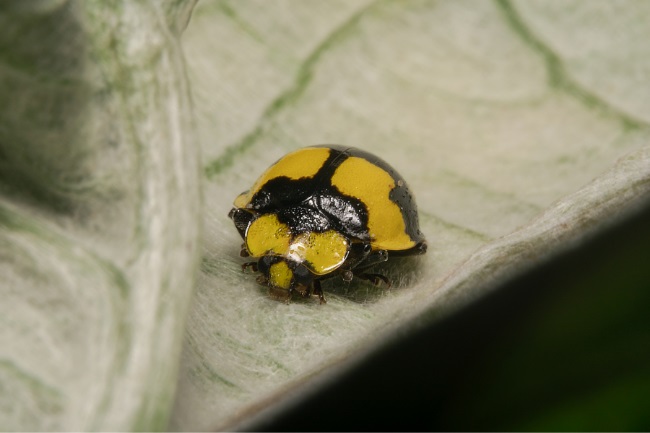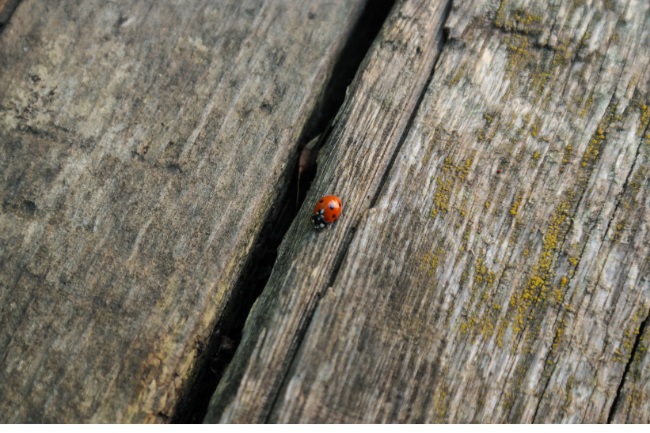The technical definition for what ladybugs do in the winter is diapause, as they are cold-blooded insects. This is a very similar state to hibernation, and therefore many people will refer to it as such.
Contents
What is hibernation?
We tend to think of hibernation as just a big winter sleep and often talk of any animal which rests for more extended periods during the winter as entering hibernation. Yet hibernation is a very complex physiological response, with the animal’s body going through lots of changes to help itself survive in conditions that might otherwise be fatal.
| Ladybug Species | Hibernation Period |
|---|---|
| Asian Lady Beetle | Late autumn to early spring |
| Seven-Spotted Ladybug | Late autumn to early spring |
| Convergent Ladybug | Late autumn to early spring |
| Two-Spotted Ladybug | Late autumn to early spring |
| Cream-Streaked Ladybug | Late autumn to early spring |
Many animals become less active in the winter months, as food is less readily available for them, but for them to be hibernating, they need to significantly slow down their heart rates and their breathing, as well as drop their metabolic rate. This means the animal is expending less energy and results in a drop in its body temperature. However, hibernation isn’t the only way animals have adapted to get through a tough time.
What other forms of dormancy are there?
While hibernation is the most well-known type of winter dormancy and, therefore, often over-applied, the term torpor would be more correctly used for many animals. While hibernation is a type of long-term torpor, this word can also be used for much shorter periods of dormancy. Some animals will enter torpor for a few hours to days to get through a cold snap and then become active again once the temperature rises. For example, many hummingbirds go into torpor during the night to avoid burning up their energy reserves.
While hibernation is common in many mammals within temperate climates, most insects enter a state of diapause instead. Diapause is a state where the animal will cease to develop and is common in the egg or larval stage of many insects but can also occur in adults. This is similar to hibernation, with the metabolic rate falling and the animal entering a state of dormancy. Most insects are classed as entering diapause rather than hibernation because they are mostly cold-blooded or ectothermic.
As the definition of hibernation requires the animal to regulate its in body temperature, reducing it dramatically, cold-blooded animals are not able to do this, as they receive their warmth from external sources such as the sun. Similarly, many reptiles will enter brumation during the colder months, being very similar to hibernation but with the changes more specific to those that these ectothermic animals need to make to survive. On the flip side of hibernation, we have aestivation.
Though hibernation is used as a term for creatures exhibiting a physiological response to avoid the cold weather, aestivation is a similar response in warmer climates, where animals may be trying to escape high temperatures or dry conditions. It is widespread with animals like worms and snails, which would quickly dry out in boiling temperatures.
Do ladybugs hibernate?

Given all the different terms for dormancy in animals, what do ladybugs do? Well, ladybugs, like many insects, are ectothermic. Because of this, they enter diapause during the cooler periods. They enter this stage in their adult forms, though some species will mate before entering diapause and then not restart the gestation until after becoming active again in the spring.
While in the scientific sense, we wouldn’t say they hibernated, this term is used widely in a more colloquially sense to mean animals that remain dormant over winter and is therefore often applied to ladybirds.
To complicate matters, however, not all ladybugs need to enter diapause. Because ladybugs are found all over the world, apart from the Antarctic and across all different climates, some ladybugs do not experience the cold winters that might mean they need to take a break. However, many ladybirds in warm climates choose instead to aestivate to avoid the warmest part of the year.
What are the benefits of dormancy?
For most animals, the benefits of dormancy, in whatever form it takes, are to reduce the animal’s energy expenditure when there are fewer resources around. By lowering their breathing or heart rate and lowering their temperature, they can reduce the amount of energy the body is utilising even compared to what they might use during sleep. Additional benefits could come from surviving freezing temperatures, which would kill them if they did not enter their state of dormancy.
Many insects and other invertebrates fill their blood with chemicals that help prevent ice crystals from forming within them. These ice crystals would damage cells and could seriously maim or kill these creatures if allowed to develop.
The downsides of entering a state of dormancy, such as hibernation or torpor, are that animals can take a long-time to revive from them. This means if a predatory animal were to find them in this state, then they wouldn’t be able to get away quickly enough to escape becoming a snack. Therefore, many species have adaptations to try and scare away potential threats.
For example, the peacock butterfly makes a loud hissing sound when disturbed and flashes its wings open and shut. The bright, eye-like patterns make it appear like a large animal is watching the predator.
What do ladybugs look for in a ‘hibernation’ spot?
Like many insects, ladybugs risk freezing if the temperature drops too low for them, even when they are in a state of diapause. Therefore they often look for slightly warmer locations to spend their winter months. This is usually somewhere nice and sheltered, protected from the winter chill. Below the bark of a rotting tree might be a natural choice, but with the invention of central heating, many ladybugs now flock to our houses for a nice toasty winter spot.
| Ladybug Species | Hibernation Locations |
|---|---|
| Asian Lady Beetle | Rocky crevices, leaf litter, buildings |
| Seven-Spotted Ladybug | Trees, shrubs, garden debris |
| Convergent Ladybug | Trees, shrubs, garden debris |
| Two-Spotted Ladybug | Trees, shrubs, garden debris |
| Cream-Streaked Ladybug | Trees, shrubs, garden debris |
However, they also need a good amount of moisture to ensure they don’t dehydrate, so being in the warmest parts of our modern homes often isn’t suitable. A damp corner of a window in a room where the heat is rarely on might suit them well.

They also like to aim for places that are nice and dark and sheltered. This is mostly to avoid being spotted by predators and prevent winter snow and rain from falling on them, increasing the risk that they might freeze. Other adaptations to the cold include their inclination to huddle up with other ladybugs. This is also an adaptation to keep warm; however, staying in groups can also protect against predators.
While the red colouration should inform most raiders of the ladybugs’ toxic and unpalatable innards, if a less clued up diner tries a couple, he’ll soon learn that it isn’t worth gobbling up the whole lot. In order to create their loveliness, as a group of ladybugs is called, individuals give out a chemical scent once they’ve found a suitable spot, calling others of their kind to them.
When does their dormancy end?
Some insects will emerge from dormancy during warm days in the winter months. This can cause severe problems as their food might not be available. Ladybugs tend to play it safe and wait till the temperatures are nice and high before emerging from their slumber. This is partly because their prey species, aphids, will not be active until the plants have started to unfurl their leaves or begin to grow. Therefore, it is day length and temperature that stirs them into action, though it isn’t a precise art. Late frosts or freak weather conditions could cause a loveliness to head off to the pastures, only to have them buried in a snowdrift the next day.
Climate change is already causing many animals to emerge from dormancy or migrating in from other countries, with temperatures and weather conditions being more unpredictable. Some species are more adaptable, but particularly those which rely on the emergence of other temperature-triggered prey species can be let down by a sudden upturn or downturn from the usual.
Also read: Do Ladybugs Eat Plants? (Explained)
What to do if you find a ladybug during winter?
If your ladybug is huddled in a suitable place, warm, moist and sheltered, then the best thing to do is leave it where it is. They won’t damage your house and certainly aren’t harmful to humans. If you have a pet that might be inclined to harm or eat the ladybugs, or if the location isn’t suitable, it may be best to move them, but only if you absolutely have to.
First, find a suitable alternative place, making sure it matches up to all their criteria. Carefully move the ladybugs to their new home, but make sure they have the option to leave if they want to.

